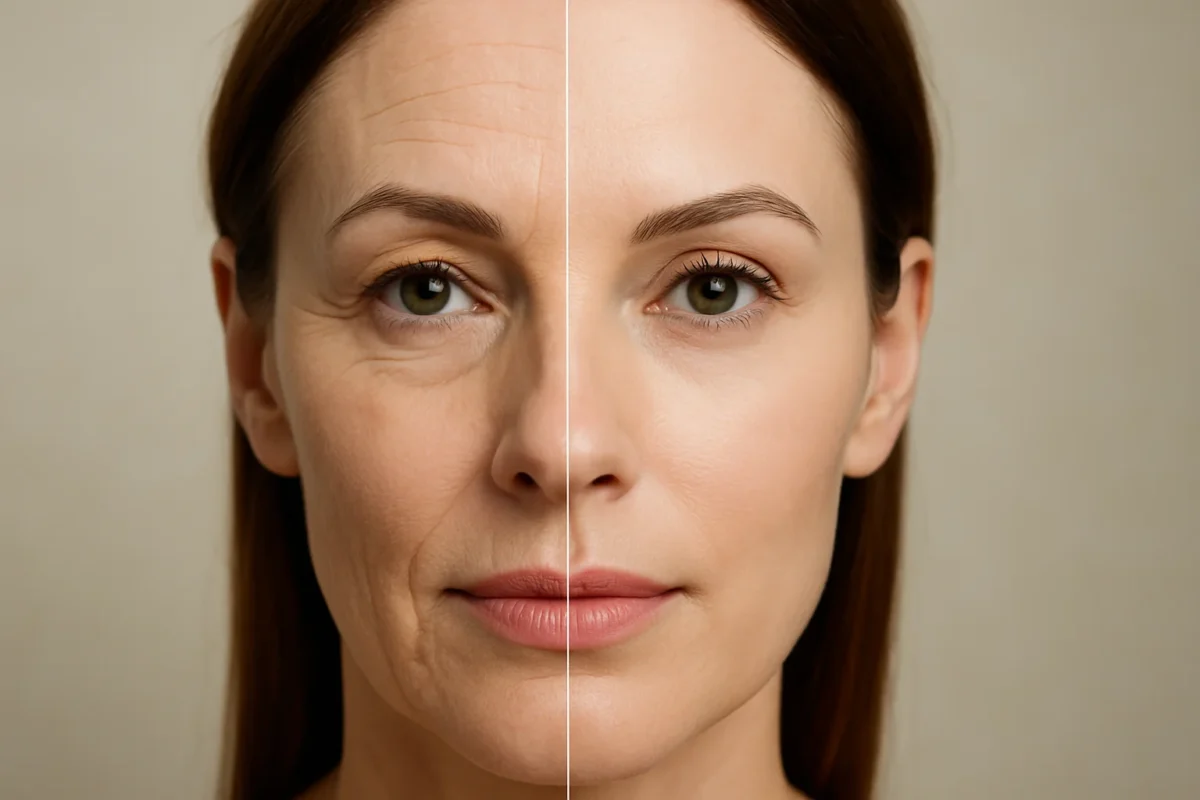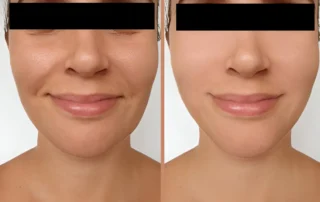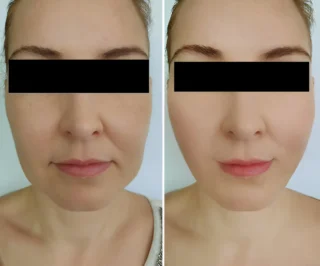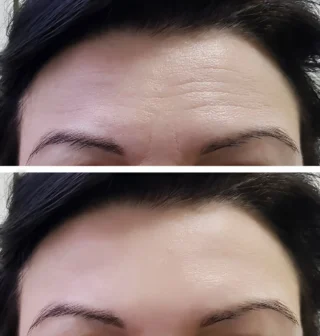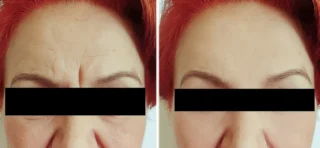Table of Contents
- Key Takeaways: Dysport vs Botox
- What is Botox?
- What is Dysport?
- Dysport vs Botox: How is it Done
- Pros and Cons of Dysport vs Botox
- Dysport vs Botox Cost – A Realistic Breakdown
- Botox vs Dysport: Which One is Best for You?
- Aftereffects and Aftercare
- Conclusion
- FAQs
Key Takeaways: Dysport vs Botox
- Purpose: Both reduce fine lines and wrinkles by relaxing facial muscles.
- Treatment Area: Botox is ideal for small, precise areas; Dysport works better for larger areas.
- Results & Duration: Dysport acts faster (2–3 days) but lasts slightly shorter (3–5 months); Botox takes longer (6–7 days) but lasts 3–6 months.
- Appearance: Dysport offers a more natural look; Botox may risk a “frozen” effect if overused.
- Consult a Professional: Always seek a qualified dermatologist or cosmetic specialist for the best results.
Are you tired of those fine lines and wrinkles around your eyes and forehead? If yes, then you may want to consider non-surgical procedures to achieve that youthful and wrinkle-free look on your face. Normally, there are two options to choose from – Dysport vs Botox. These are both neuromodulator treatments, taken to reduce the fine lines on the face, like crow’s feet and glabellar lines (vertical lines between your eyebrows).
It is best if you start this treatment at an early stage, before these lines are permanently etched on your beautiful face and spoil your look. This blog explores Botox vs Dysport – their differences, pros and cons, and when they are used. Let’s dive in and study Botox vs Dysport in detail.
What is Botox?
Botox is a type of neurotoxin that is used to treat fine lines on the face by limiting the contraction and movement of the muscles. It uses botulinum toxin type A protein as its active ingredient. This treatment is FDA-approved, non-surgical, and doesn’t require you to stay in the hospital for too long, as the process itself requires a few minutes to several hours.
You should consider Botox when you want to treat smaller areas and fewer fine lines. It’s not like Botox is not beneficial for more prominent lines or that it doesn’t perform that well – but because it is a targeted process and involves treating precise areas for better results.
What is Dysport?
Dysport is also an FDA-approved skin treatment used to treat and reduce wrinkles and fine lines on your face. Unlike Botox, which is a targeted process, Dysport is a treatment that focuses on a larger part and can cover more areas. You can get your glabellar lines, crow’s feet, and other wrinkles treated with the help of Dysport treatment.
It also uses botulinum toxin type A protein as an active agent; the difference is in the formulas and how it spreads in the skin. It is also a non-surgical process, is usually completed in a few hours, and you don’t need to be admitted to the hospital – Your doctor can treat you in their office.
Dysport vs Botox: How is it Done
When you have actually made up your mind to get a skin treatment for the unwanted wrinkles on your face, you must consult a doctor first. They will examine your face and determine whether you need Botox or Dysport. When visiting the doctor for the treatment, you should ask for Dysport vs Botox pictures and compare the Dysport vs Botox before after results to assess the doctor’s abilities as well as make a final decision if you really want the treatment or not.
At first, the consultant or your doctor examines your face and determines where you need Botox vs Dysport treatment and marks the areas. Before injecting, the areas are cleaned, and often, a numbing cream is applied to reduce the discomfort.
Both Botox and Dysport are administered by injecting botulinum toxin type A into the specified and targeted area that has to be treated using a very fine and unused needle. The protein is injected into those wrinkle-creating muscles in small amounts. The injection process can take 10-20 minutes, and you can return to your normal activities after that.
Pros and Cons of Dysport vs Botox: What to Look Out For?
While Botox vs Dysport are both highly effective skin treatments, and are sought worldwide to treat fine lines on faces and get that youthful look back, there are some pros and cons of Dysport vs Botox that should be considered. Below, we have discussed some major pros and cons of Dysport vs Botox.
Botox
Pros
- Trusted Process: Botox is FDA-approved and has been used for over 20 years by many people across the world.
- Precise Results: It is ideal for precise and targeted results, like fixing crow’s feet.
- Lasting Effects: Botox usually lasts for around 3-6 months, giving you enough time to shine that wrinkle-free and smooth look.
Cons
- Slow Results: While really effective, Botox is a little slow to kick in. You can see its effects in around 6-7 days.
- Limited Spread: As mentioned above, Botox is a targeted treatment and is not ideal for larger treatment areas.
- Risk of Stiffness: Too much Botox can lead to stiffness of muscles and can give you a “frozen” look, limiting your facial movements.
Dysport
Pros
- Faster Results: Dysport shows faster skin improvements, and you can see the visible results in 2-3 days after the treatment.
- Natural Look: Unlike Botox, Dysport doesn’t give off that “frozen” look and delivers a more natural look without stiffness.
- Better for Larger Areas: As mentioned above, Dysport is not a targeted treatment and covers a large skin area to treat.
Cons
- Shorter Duration: Dysport has a shorter-lasting duration than Botox. It lasts for about 3-5 months in general.
- Requires More Units: More dosage, i.e, a higher number of units are needed for Dysport than Botox.
- Variable Results: The results for Dysport are variable and different from Botox, as said by the people who have taken the treatment.
Dysport vs Botox Cost – A Realistic Breakdown
Below, we have given a table that breaks down the Dysport vs Botox cost globally. However, these cost ranges are estimated and given so that you can have an idea and plan your budget accordingly. It is best to consult with medical professionals like the Canadian Medical Centre (CMC) Abu Dhabi.
While both are priced similarly, Dysport may have a slightly higher cost as it requires more units than Botox. Let’s take a look at the table and understand the prices.
Treatment Area |
Botox (Estimated Cost) |
Dysport (Estimated Cost) |
| Per-Unit Price (US Avg.) | $14–$20 per unit | Approx. $4–$8 per unit |
| Conversion Rate | — | Approx. 3 units Dysport ≈ 1 unit Botox |
| Glabellar (frown) Lines | 15–25 units → $210–$500 | Approx. 45–75 units → roughly $180–$600 |
| Forehead Lines | 10–30 units → $140–$600 | Approx. 30–90 units → roughly $120–$720 |
| Crow’s Feet (per side) | 12–24 units → $168–$480 | Approx. 36–72 units → roughly $144–$576 |
| Full Upper Face Combo | 30–60 units → $420–$1,200 | Approx. 90–180 units → roughly $360–$1,440 |
Botox Vs Dysport: Which One is Best for You?
Now this is a crucial step to determine whether your skin demands Botox or Dysport. Well, there’s no need to worry because we’re here to resolve that issue. While your doctor would examine and determine which skin treatment you need, why not have an idea beforehand?
Choose Botox If:
- You want a tried-and-tested option.
- You need precise targeting (e.g., small wrinkles).
- You’ve had good results with it before.
Choose Dysport If:
- You want faster results.
- You’re treating larger areas (e.g., forehead).
- You’ve built resistance to Botox.
Aftereffects and Aftercare of Dysport and Botox Treatment
We have mentioned some of the normal aftereffects you can experience after the skin treatments, along with some aftercare tips to avoid any mishaps.
Aftereffects
- Redness & Swelling: The injection site may appear red and swollen for a few hours.
- Bruising: Small bruises or scratches may appear, depending on the sensitivity of the skin.
- Tenderness: Mild soreness around the treated area is commonly observed.
- Headache: Some people may experience a mild headache, especially after a treatment on the forehead.
- Drooping: In rare cases, if the toxin spreads, it may cause drooping eyelids or uneven brows, though this usually resolves in a few weeks.
Aftercare
- Avoid Touching: Do not rub or massage the treated area for at least 24 hours to avoid infections.
- Stay Upright: Avoid lying down for at least 4 hours after the treatment.
- No Intense Exercise: Skip any type of intense exercise to reduce the chances of swelling and bruising.
- Limit Heat Exposure: Saunas, hot tubs, and sunbeds should be avoided for a day, as heat can increase swelling.
Conclusion
Botox and Dysport are widely sought-after skin treatments worldwide and offer great, lasting benefits. These treatments are used to treat the fine lines and wrinkles that usually appear on our foreheads and around our eyes, and mouths.
Determining and selecting the correct treatment for your skin is essential and should be done properly by a professional. If you reside in Abu Dhabi, you can find many professional beauty clinic Abu Dhabi. Canadian Medical Center is an Abu Dhabi medical center that has dedicated dermatologists and plastic surgeons, offering exceptional Botox and Dysport treatments.
FAQs
Which lasts longer, Botox or Dysport?
Dysport lasts for about 3-5 months, while Botox lasts for 3-6 months. So, while the difference is really small, Botox lasts a little longer than Dysport.
Why do people prefer Dysport over Botox?
The reason why people prefer Dysport over Botox is that Dysport spreads into a larger area and more quickly, which is an advantage for treating larger areas.
How long does Dysport take to work?
You can see visible results after Dysport treatment in 2-3 days. Your skin will appear fresher, and the fine lines will be reduced as well.
Does Dysport look more natural than Botox?
Not really. Both Dysport and Botox have similar results and procedures. The only difference is the duration and the area of expertise. Botox is targeted, and Dysport can cover larger treatment areas.
Are Botox and Dysport treatments safe?
Absolutely! Botox and Dysport are FDA-approved and safe skin treatments. However, there may be some aftereffects like redness, swelling, slight bruising, headache, and drooping in rare cases, which is totally normal.
How do I get the best results from Dysport and Botox?
To get the best results from these skin treatments, it is necessary that you avoid touching your face, skip strenuous exercise, stay upright, and limit heat exposure. To maintain that wrinkle-free look, you need to get these treatments often.

